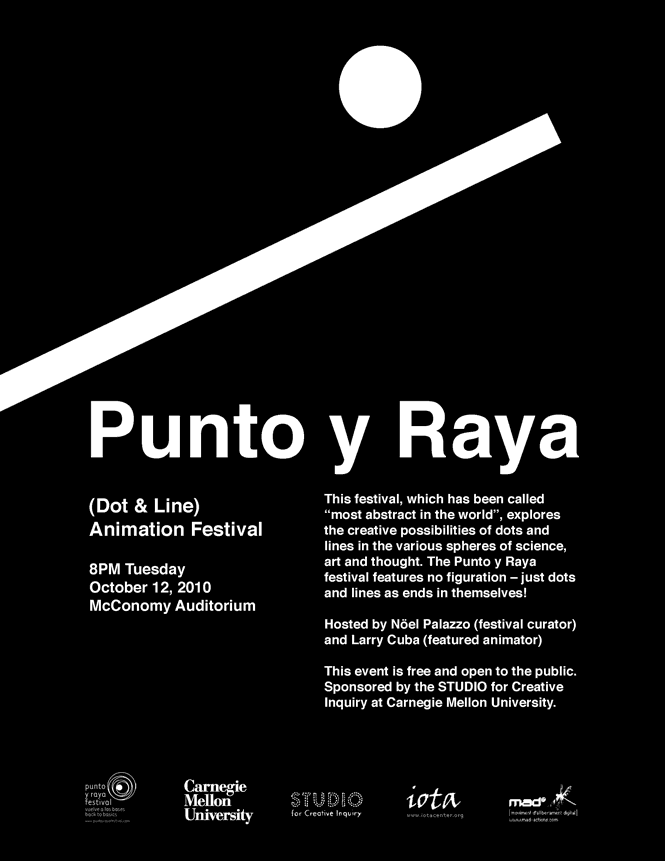Here’s a short list of digital tools which may help graduating fine arts students bridge the transition to adult working life.
I’m currently co-teaching a Senior Project course for approximately 40 Fine Arts undergraduates in the Carnegie Mellon School of Art. In just a few months, these seniors, most of whom work in traditional 2D media, will be plopped out into the world and expected to feed themselves. To help them, I’ve drawn up this list of Web 2.0 services which can help a talented young artist connect to their worldwide audience and maintain a sustainable artistic practice out of school. Of course, this list is (a) hardly exhaustive, (b) rapidly changing, and (c) already well-known to digerati. Still, many students working in non-digital media seem unaware of these important tools, which have revolutionized the ways in which an artist can make a living from their work. Thus I present a list of resources to help you…
————————————————
SELL YOUR CRAFTS
Etsy: http://www.etsy.com/how_selling_works.php
An online marketplace for buying and selling all things handmade.
We connect buyers with independent creators and shop owners to find the very best in handmade, vintage and supplies. Examples: Lightexture, Liane Tyrell aka Enhabiten.
MakersMarket: http://makersmarket.com/
“A curated market place of wonderful science, tech and artistic creations created and sold directly by some of our favorite Makers from around the World.” [Update: I’ve learned that MakersMarket is slated to be shut down. Use Etsy instead.]
————————————————
PUBLISH A BOOK, CD or DVD
CreateSpace: https://www.createspace.com/
“Our free online publishing tools and community can help you complete and sell your DVD or CD.
Distribute on Amazon.com, your own website, and other retailers without setup fees or inventory.”
Blurb: blurb.com
“All the tools you need to make your own photo book, whether you’re making a personalized wedding album, cookbook, baby book, travel photo book, or fundraising book.”
Lulu: http://www.lulu.com/publish/
“Tools and services to make publishing simple and the most options to sell your books.”
————————————————
PRINT/FABRICATE YOUR CUSTOM DESIGNS, then SELL THEM
The key behind these sites is that they provide print-on-demand (or fabricate-on-demand) services. You don’t have to maintain an inventory of unordered products, and your products can be customized for your customers.
Spreadshirt: http://www.spreadshirt.com/
Create, buy and sell your own apparel with designs, photos or text.
Zazzle: http://www.zazzle.com/
Create a wide variety of custom objects such as apparel, mugs, and posters.
CafePress: http://www.cafepress.com/
Create custom apparel, stickers, and mugs
Qoop: http://www.qoop.com/
Publish & sell photos & photo products.
Shapeways: http://www.shapeways.com/
“Your personal fabrication service, using 3D printing.”
Tenbills: http://www.tenbills.com/
Design & buy T-shirts.
Ceramic glaze decals:
Custom Printed Fabric:
Postcards to promote your work:
————————————————
FREELANCE ELECTRONICALLY
Mechanical Turk: https://www.mturk.com/mturk/welcome
“Artificial Artificial Intelligence”
Complete simple tasks like transcriptions, categorizations, and spell-checks to earn small amounts of money. It doesn’t give you much but it’s something!
Freelancer: http://www.freelancer.com/
“The world’s largest outsourcing marketplace”
Guru: http://www.guru.com/pro/index.aspx
“Find freelance jobs at the world’s largest online marketplace”
Elance: http://www.elance.com/
“A platform for flexible employment, Elance helps businesses hire and manage online instead of onsite.”
Clickworker: http://www.clickworker.com/en/
“Work independently, whenever and wherever. All you need is a computer, Internet access, and interest in writing, translating, researching, or data processing.”
SwapASkill: http://www.swapaskill.com/
“Swap what you can give or can do for what you need. Get what you want – do something you’re good at, or give something you don’t need.”
oDesk: http://www.odesk.com/jobs/
Freelancing site for small tasks.
99Designs: http://99designs.com/
Competitive graphic design freelancing.
Fiverr: http://www.fiverr.com/
“The place for people to share things they’re willing to do for $5”
————————————————
CROWDFUND YOUR PROJECTS
Crowd funding (sometimes called crowd financing, or crowd sourced capital) describes the collective cooperation, attention and trust by people who network and pool their money together, usually via the Internet, to support efforts initiated by other people or organizations. Crowdfunding occurs for any variety of purposes, from disaster relief to citizen journalism to artists seeking support from fans, to political campaigns.[1]
Kickstarter (http://www.kickstarter.com)
“A new way to fund creative ideas and ambitious endeavors.” Upload text and a video introducing a project you need help funding and see if your readers like your project enough to donate. Here are some examples of successful Kickstarter campaigns:
Indiegogo (http://www.indiegogo.com)
“A collaborative way to fund ideas.” Oriented towards indie films.
The Point (http://www.thepoint.com/)
“Easy and effective group action.” Oriented towards social causes.
Givemeaning (http://www.givemeaning.com/)
Give-or-take fundraising community. Oriented towards social causes.
————————————————
ENHANCE YOUR PRODUCTIVITY
Tools for Sharing and Storing…
You can make your workflow much more efficient with better tools to manage your data. You’ll also never lose your data again.
Tools for Other Activities:
Staying informed informed with Twitter: http://Twitter.com/
Most of you have Facebook accounts, which embeds the “social graph” — the network of people you know (or used to know) in real life. Twitter, on the other hand, embeds the “interest graph” — the network of people interested in what you’re making, and the network of people and organizations that are doing things you find interesting. So here’s another argument for why you might find Twitter to be a good tool for keeping informed about the latest arts opportunities — and developing a (global) audience of people interested in your work, even though they may not know you personally. In the words of Naval Ravikant and Adam Rifkin, Twitter is:
- Built on one-way following rather than two-way friending
- Organized around shared interests, not personal relationships
- Public by default, not private by default
- Aspirational: not who you were in the past or even who you are, but who you want to be
————————————————
ACCESS A SHOP, MAKE THINGS, LEARN NEW SKILLS
Places to make things:
Real-world places to take workshops in new skills:
Sites where people share instructions for doing and making things;



